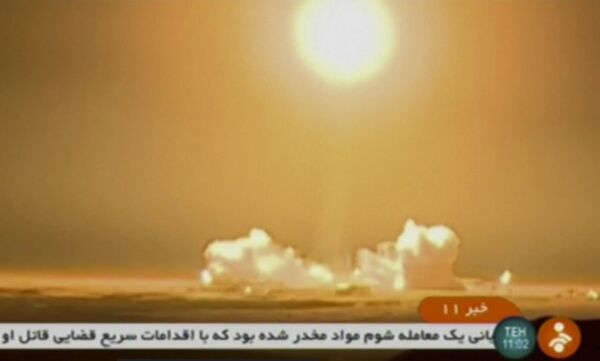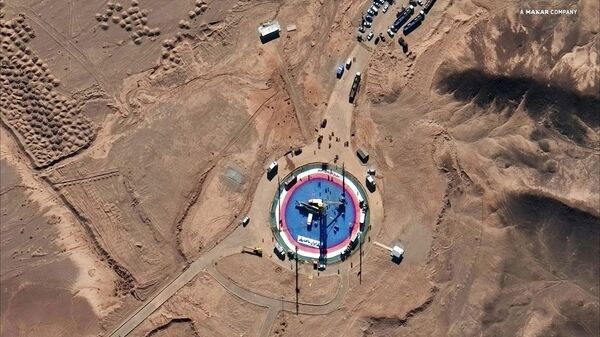A satellite photo from the Planet Labs, a California-based Earth imaging company, has shown what appears to be smoke billowing from the launch pad at the Imam Khomeini Spaceport in Semnan province, northern Iran following a failed launch attempt on Thursday.
Satellite images appear to show the smoldering remains of a rocket at an Iran space center that was to conduct a satellite launch. The photos show black smoke and part of a painted launch pad apparently scorched away. https://t.co/G2J9u9EFEA
— The Associated Press (@AP) 29 августа 2019 г.
An anonymous Iranian official confirmed to Reuters that a rocket launch had failed. “It was due to some technical issues and it exploded but our young scientists are working to fix the problem,” the official said, without providing any more details.
Dave Schmerler, a researcher from the Middlebury Institute of International Studies at Monterey, who analysed the image, said that the snap, first shared exclusively with NPR, seemed to show that the launch vehicle “blew up on the launch pad.”
“This failure happened maybe a couple of minutes before the image was taken,” he said.
A second image taken by commercial satellite company Maxar showed more details from the damaged launch area taken from another angle, with the rocket appearing to be still attached to its erector platform.
From NPR: An Iranian rocket appears to have exploded on the launch pad Thursday. Satellite images show the rocket still attached to the machinery used to transport and erect it for launch at the "Imam Khomeini Space Center" in northern Iran. The failure is the third this year. pic.twitter.com/siT4cWH2dK
— Firouz M. Naderi (@Firouz_Naderi) 29 августа 2019 г.
Michael Elleman, director of the nonproliferation and nuclear policy programme at the London-based International Institute for Strategic Studies, told NPR that the remains of the rocket seemed to indicate that the failure was caused by a problem during the fuelling stage, or by an electrical short.
Iran attempted to launch satellites into orbit in January and February of this year, but these launches similarly failed. The January launch involved the Simorgh rocket, and sought to take a domestically-developed environmental data-gathering satellite into orbit. The February launch involved a Safir rocket. After the failure of the second launch, Iranian Foreign Minister Mohammed Javad Zarif said Tehran was not ruling out that the US could be deliberately sabotaging the country’s fledgling space programme.

The US and its European, Saudi and Israeli allies have repeatedly accused Iran of violating the UN Security Council Resolution adopting the 2015 Iran nuclear deal. Iran has dismissed these claims, saying its peaceful space programme has nothing to do with the nuclear deal, which doesn’t restrict the development of rocket and missile technology so long as it is not designed to carry nuclear weapons.
Iran has been working on the development of space rockets and satellites for over a decade, launching its first home-grown satellite into orbit in 2009, and successfully launching a biological payload into orbit in 2011. In late 2013, Iran launched a monkey into orbit, retrieving it after a 15 minute flight. Another satellite was launched in 2015. Iran’s Space Agency has made these advances despite having an extremely modest budget, which reportedly amounted to the equivalent of just $4.6 million during the 2017 fiscal year.




